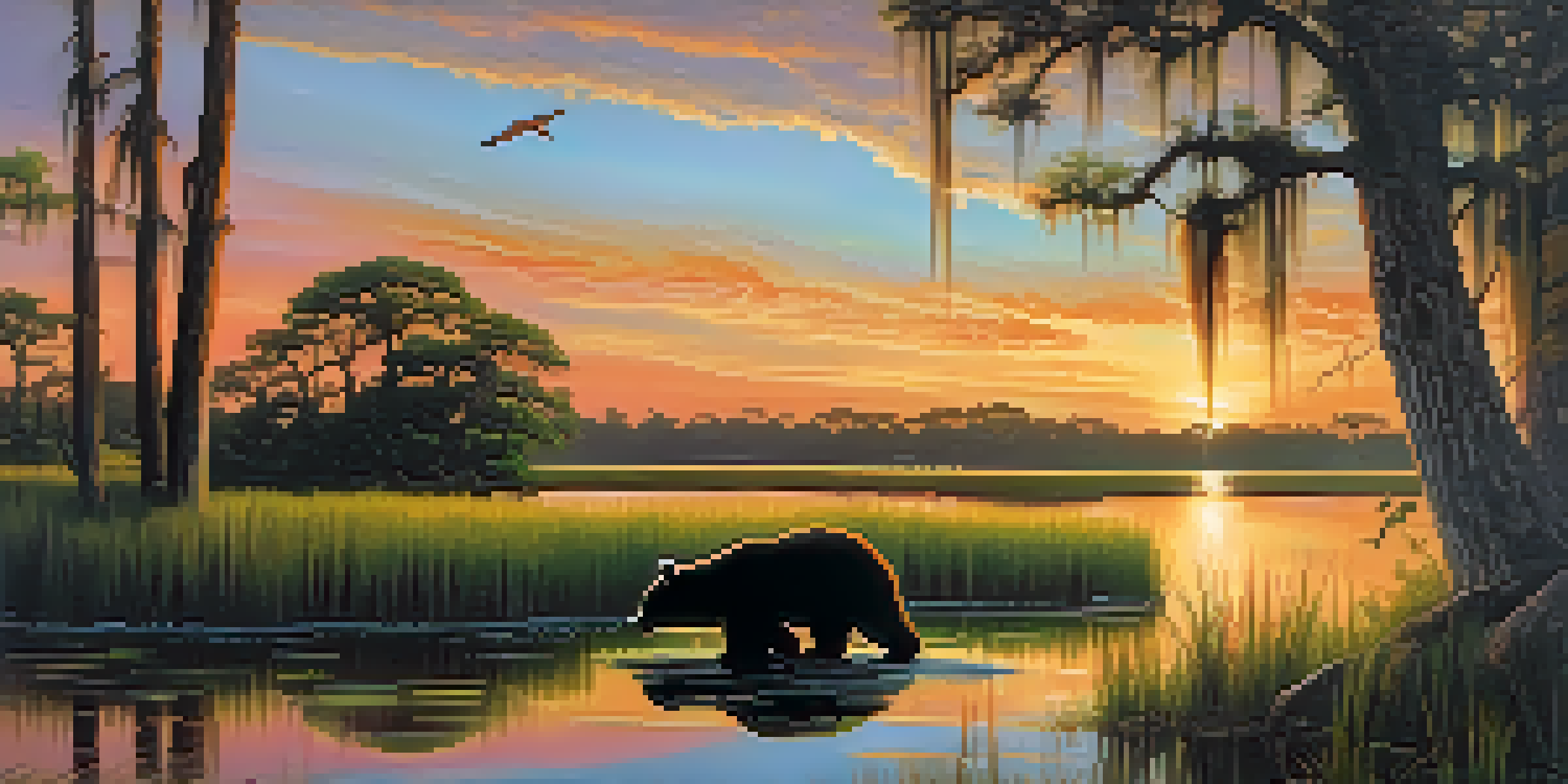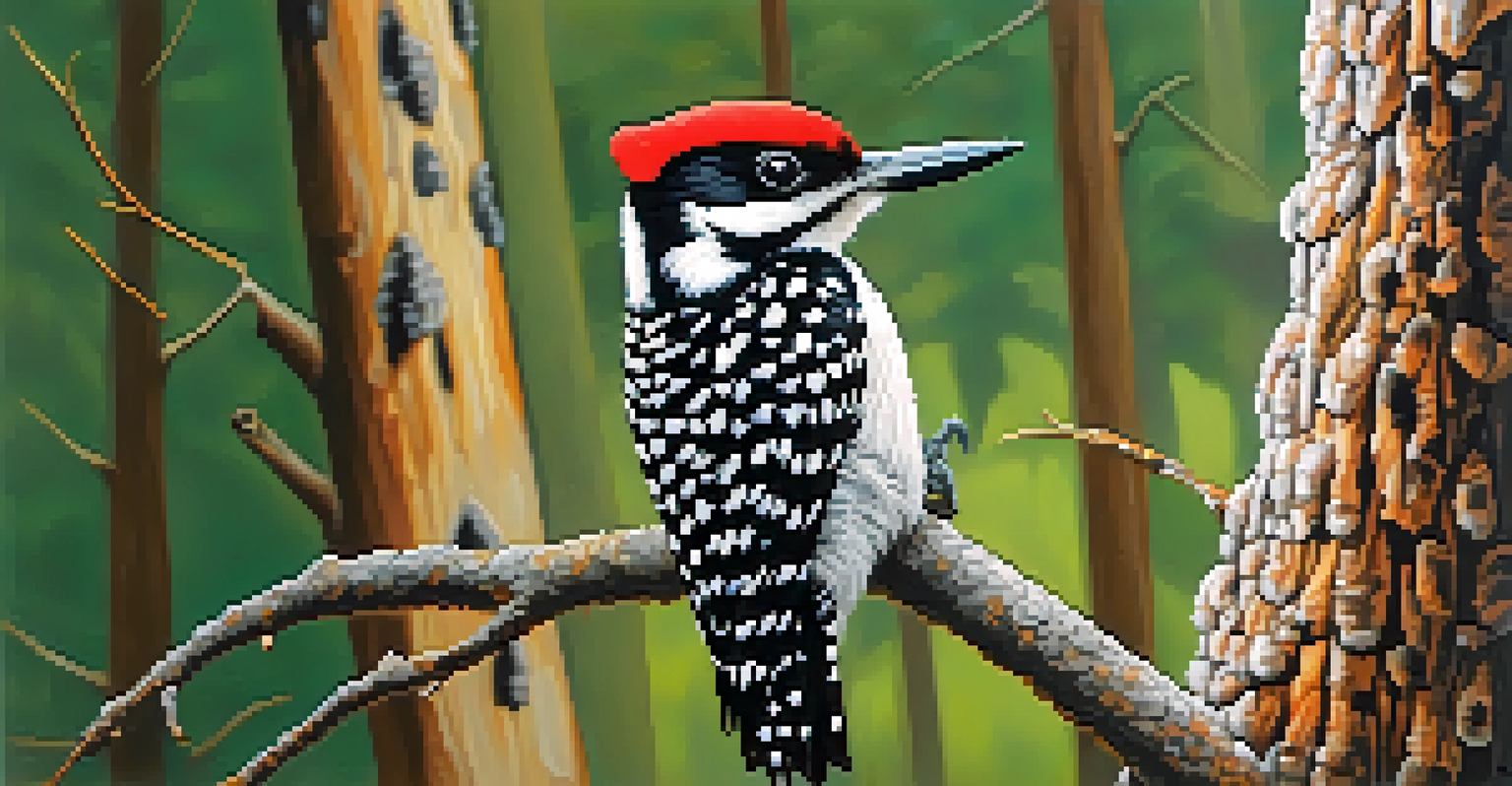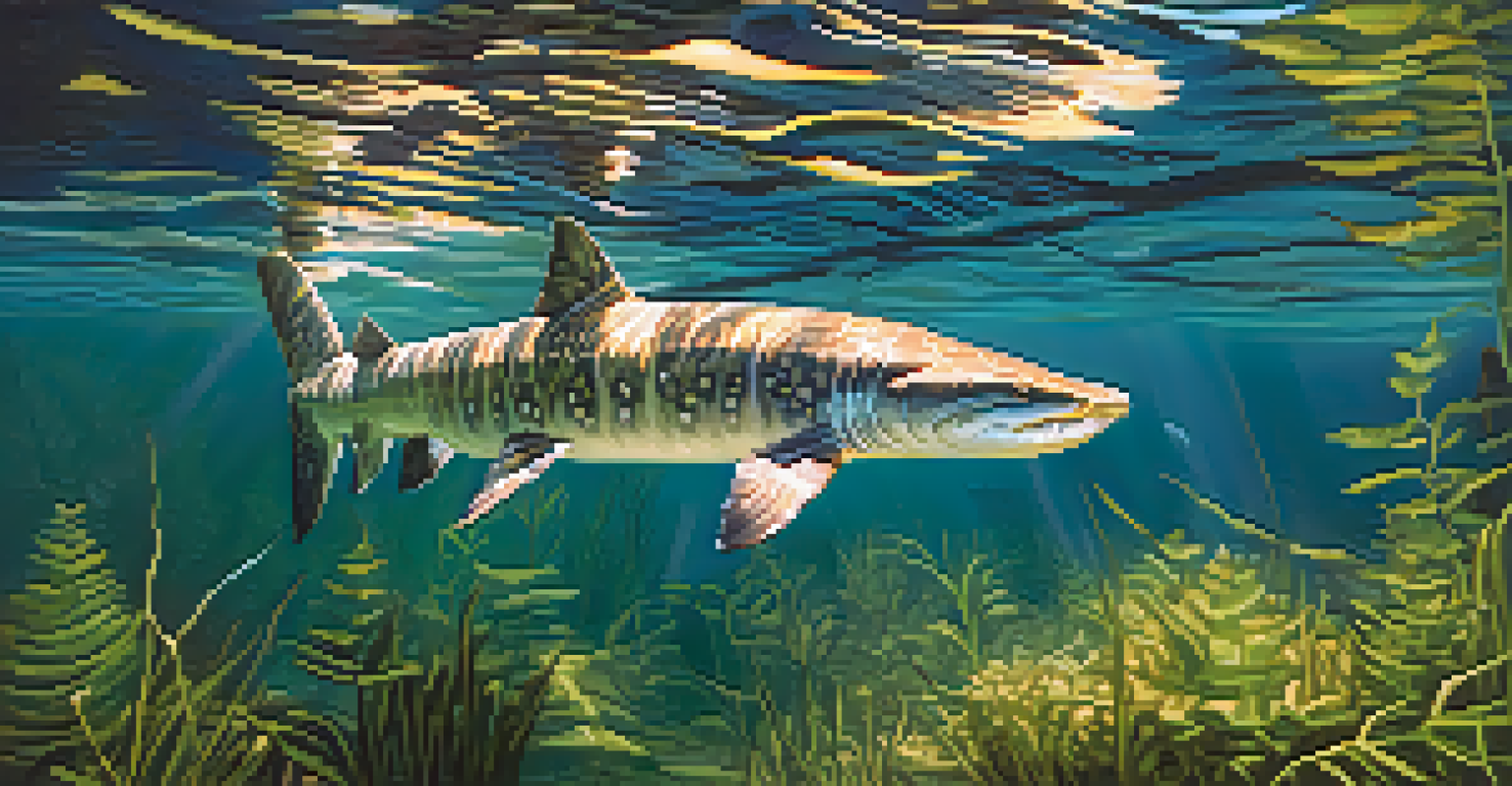Top 10 Endangered Species in Louisiana's Natural Habitats

Why Louisiana's Biodiversity is Worth Protecting
Louisiana is a treasure trove of biodiversity, boasting unique ecosystems like wetlands, swamps, and forests. These habitats support a variety of plant and animal species, many of which are found nowhere else in the world. Protecting this biodiversity is crucial not just for the species themselves, but for the health of the entire ecosystem, which provides services like clean water and flood protection.
In every walk with nature one receives far more than he seeks.
The state is home to numerous endangered species, each playing a vital role in maintaining the balance of their respective habitats. For instance, the unique interactions between species often help pollinate plants or control pest populations. When one species declines, it can trigger a cascade effect, impacting many others and even the humans who rely on these ecosystems.
By understanding the importance of these endangered species, we can foster a collective effort to conserve their habitats. Engaging with local communities and raising awareness about these creatures can spark action, ensuring future generations can enjoy the rich biodiversity that Louisiana has to offer.
1. Louisiana Black Bear: A Conservation Success Story
Once on the brink of extinction, the Louisiana black bear has made a remarkable comeback thanks to concerted conservation efforts. This bear is a vital part of the state's ecosystem, helping to maintain the health of the forests and wetlands. Their presence indicates a healthy environment, which is essential for other species as well.

Found primarily in the bottomland hardwood swamps of Louisiana, the black bear plays a unique role in seed dispersal. As they forage for food, they help spread seeds across vast areas, promoting plant growth and biodiversity. This natural process contributes to the overall health and resilience of the ecosystem.
Biodiversity is Crucial for Ecosystems
Protecting Louisiana's biodiversity is essential for maintaining healthy ecosystems that provide vital services like clean water and flood protection.
While the black bear population is currently stable, ongoing habitat loss and human encroachment pose threats. It’s crucial for communities to support conservation initiatives that protect their natural habitats, ensuring that this iconic species continues to thrive in Louisiana.
2. Red-Cockaded Woodpecker: A Forest Dweller in Trouble
The red-cockaded woodpecker is a small bird with a big role in the longleaf pine ecosystem of Louisiana. These woodpeckers depend on mature pine trees for nesting, and their decline is closely tied to habitat loss caused by logging and urban development. Their presence is vital for the health of their habitat, as they create nesting cavities that other species can use.
The environment is where we all meet; where we all have a mutual interest; it is the one thing all of us share.
Once widespread, these woodpeckers are now classified as endangered, showcasing the impact of human activity on wildlife. Conservation efforts focus on preserving and restoring longleaf pine forests, which not only benefit the woodpecker but also a myriad of other species that call these forests home.
By actively participating in habitat restoration projects, communities can help protect the red-cockaded woodpecker and the diverse ecosystem it supports. Every effort counts, and when people come together, they can make a significant difference in the survival of this unique bird.
3. Louisiana Pine Snake: A Rare Reptile in Peril
The Louisiana pine snake, a strikingly patterned reptile, is critically endangered and primarily found in the longleaf pine forests of the state. This species is known for its elusive nature and is often overlooked, leading to a lack of awareness about its plight. Its habitat is threatened by logging and fire suppression, which disrupts the natural cycle of the ecosystem.
Pine snakes play an essential role in controlling rodent populations, which helps maintain the balance in their habitat. Their decline could lead to an overpopulation of these small mammals, negatively impacting plant life and the overall health of the ecosystem. Thus, protecting the pine snake is crucial for preserving the ecological integrity of its environment.
Community Involvement Drives Conservation
Engaging local communities in conservation efforts fosters a sense of shared responsibility and significantly impacts the protection of endangered species.
Conservation efforts are underway to restore and protect the longleaf pine habitat, ensuring the survival of this unique snake. Educating the public about the importance of the Louisiana pine snake can foster a stronger commitment to conservation initiatives that benefit not only this reptile but the entire ecosystem.
4. Eastern Indigo Snake: A Keystone Species on the Edge
The eastern indigo snake, known for its stunning iridescent blue-black coloration, is a keystone species in Louisiana's ecosystems. This non-venomous snake is a top predator, helping to regulate populations of small mammals and other reptiles. However, habitat destruction and illegal collection for the pet trade have led to a significant decline in their numbers.
Eastern indigo snakes thrive in a variety of habitats, including pine forests and wetlands, and they rely on healthy ecosystems to survive. Their presence indicates a balanced environment, and their decline can have ripple effects throughout the food chain. Protecting this species is crucial for maintaining the health of its ecosystem.
Conservation programs focused on habitat restoration and legal protections are essential for the survival of the eastern indigo snake. Raising awareness about this remarkable species can encourage community involvement in conservation efforts, ensuring that future generations can witness its beauty in the wild.
5. Mississippi Sandhill Crane: A Majestic Bird in Crisis
The Mississippi sandhill crane is a striking bird that plays a vital role in its ecosystem, but it is critically endangered. These cranes are known for their elaborate courtship dances and distinctive calls, yet their population has dwindled due to habitat loss from urban development and agriculture. Their wetland and grassland habitats are essential for their breeding and feeding.
These cranes are not just beautiful; they also contribute to the health of their environment by helping to maintain wetland ecosystems. Their foraging habits assist in seed dispersal, promoting plant diversity. The loss of these birds would not only be a tragedy for wildlife enthusiasts but would also disrupt the ecological balance of their habitats.
Endangered Species Need Our Help
Numerous endangered species in Louisiana, such as the Louisiana black bear and Mississippi sandhill crane, play critical roles in their habitats, and their survival depends on active conservation efforts.
Conservation efforts, including habitat preservation and reintroduction programs, are critical for the survival of the Mississippi sandhill crane. Engaging local communities in these initiatives can help create a stronger support system for protecting this majestic bird and its home.
6. Louisiana Waterthrush: A Songbird in Decline
The Louisiana waterthrush is a small songbird that thrives in the rich, moist habitats of Louisiana's swamps and wetlands. Unfortunately, habitat degradation and pollution have contributed to its decline, making it a species of concern. This bird is known for its distinctive song, which fills the air in its natural habitat, adding to the beauty of the ecosystem.
Waterthrushes play a role in controlling insect populations, which helps maintain the health of their environment. Their loss could lead to an imbalance in the ecosystem, highlighting the interconnectedness of species within these habitats. Protecting the Louisiana waterthrush is essential not just for its survival but for the overall health of the wetlands it inhabits.

Conservation efforts aimed at preserving wetland habitats can significantly benefit the Louisiana waterthrush. By raising awareness about this charming bird, we can inspire action to protect its home and ensure that its song continues to echo through Louisiana's beautiful landscapes.
7. Gulf Sturgeon: A Fish with a Long History
The Gulf sturgeon is a prehistoric fish that has roamed the waters of the Gulf of Mexico for millions of years. Unfortunately, this remarkable species is now endangered due to habitat loss, pollution, and overfishing. The Gulf sturgeon's life cycle involves both freshwater and saltwater habitats, making it particularly vulnerable to changes in its environment.
These fish are vital for maintaining the health of aquatic ecosystems, as they help to regulate the populations of other fish species. Their unique spawning behavior also contributes to the overall biodiversity of the waterways they inhabit. Protecting the Gulf sturgeon is essential for preserving the intricate balance of these aquatic environments.
Conservation efforts focused on habitat restoration and pollution control are crucial for the survival of the Gulf sturgeon. By supporting local initiatives and advocating for cleaner waterways, communities can play a significant role in ensuring the future of this ancient fish.
8. The Role of Community in Protecting Endangered Species
Community engagement is key to the success of conservation efforts for endangered species in Louisiana. When local residents understand the importance of these species and their habitats, they are more likely to take action to protect them. Community-driven initiatives, such as habitat restoration projects and educational programs, can have a profound impact on wildlife conservation.
Collaborating with local organizations, schools, and businesses can foster a sense of shared responsibility for the environment. By working together, communities can create a powerful network of support for endangered species and their habitats. Simple actions, like participating in clean-up events or advocating for local conservation policies, can make a significant difference.
Ultimately, the future of Louisiana's endangered species lies in the hands of its residents. By nurturing a culture of conservation and respect for nature, we can ensure that these remarkable species continue to thrive in their natural habitats for generations to come.